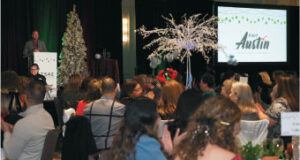The New Race for Relevance: 5 Radical Changes for Associations


By Harrison Coerver and Mary Byers, CAE
Significant and irreversible changes in the environment for associations have occurred over the last several decades – many of which have been accelerated due to the COVID-19 pandemic. Major environmental changes require commensurate organizational changes. The modest, incremental adjustments that most associations are making in response are inadequate. Radical changes in the association model are in order if associations are to survive. We tackle this and more in the revised 10th-anniversary edition of Race for Relevance: 5 Radical Changes for Associations, excerpted below.
Here are five major flaws that have materialized in the old association model.
1. Associations boards aren’t competency-based, and recruitment isn’t often intentional enough.
Associations will be well served by small boards (five directors will do) carefully selected for proven governing skills and competencies that match the organization’s opportunities or challenges. If you don’t think a five-member board is feasible, consider that most associations are actually governed by their executive committees today – and that the Million Dollar Round Table is governed by an executive committee of five (and doesn’t even have a board!). In today’s environment, associations need a robust, transparent method of identifying, recruiting, and onboarding board members.
2. Association staffs are sub-optimized.
A successful association cannot afford to sub-optimize its human capital. Well-intentioned but unproductive committees don’t make the best use of the association’s human capital. The typical association governance structure is an impediment to performance versus an asset and is costly in terms of time and money. A fully empowered CEO and staff are essential to future success.
3. All member markets are dynamic, and over time most have undergone significant change – without corresponding changes at the association.
In some instances, markets are rapidly transformed (witness the impact of COVID-19 on entertainment and transportation). Many associations are struggling to serve member markets that are vastly different from those they were initially designed to serve. Kind of like a food distributor still structured to supply the corner grocery store in an era of hypermarkets. Industry consolidation and professional specialization trends require a rigorous rethinking of the member market the association can competitively serve.
4. Associations have a propensity to add new programs, services, products, and activities – without abandoning underperformers or those no longer relevant.
The underlying assumption is that volume equals value. The more we offer, the more value for the member. The result: a growing product and service line that is uncompetitive, lacks fit and is increasingly difficult to manage and communicate. The successful association of the future will focus on a narrow product line, concentrating their resources for improved performance and competitive position.
5. Associations have been swamped by a tidal wave of technology.
Associations’ relevance is clearly at risk if they cannot quickly bridge the technology gap they have allowed. They must develop a “digital-first” mindset and invest adequate resources in new technology. An important first step is an analysis of the association’s “technology spend” and developing an approach to quickly shift resources to technologies that will add value and improve program and service delivery. It is not an option. It is imperative. Ignoring technology is a shortcut to irrelevance.
Will making radical changes be easy? Absolutely not. But change is necessary due to an increasingly competitive environment and the ravages of COVID-19. Associations are tradition-bound and risk-averse, making change particularly challenging. But there are examples of each of the above changes that have been achieved by associations and there are methods and strategies that can be employed to make it happen.
Harrison Coerver and Mary Byers, CAE are strategy and planning experts and the authors of Race for Relevance: 5 Radical Changes for Associations. A newly revised, tenth-anniversary edition will be released in the spring of this year. Learn more at www.raceforrelevance.com.
Photo credit: iStock.com/Peshkova




